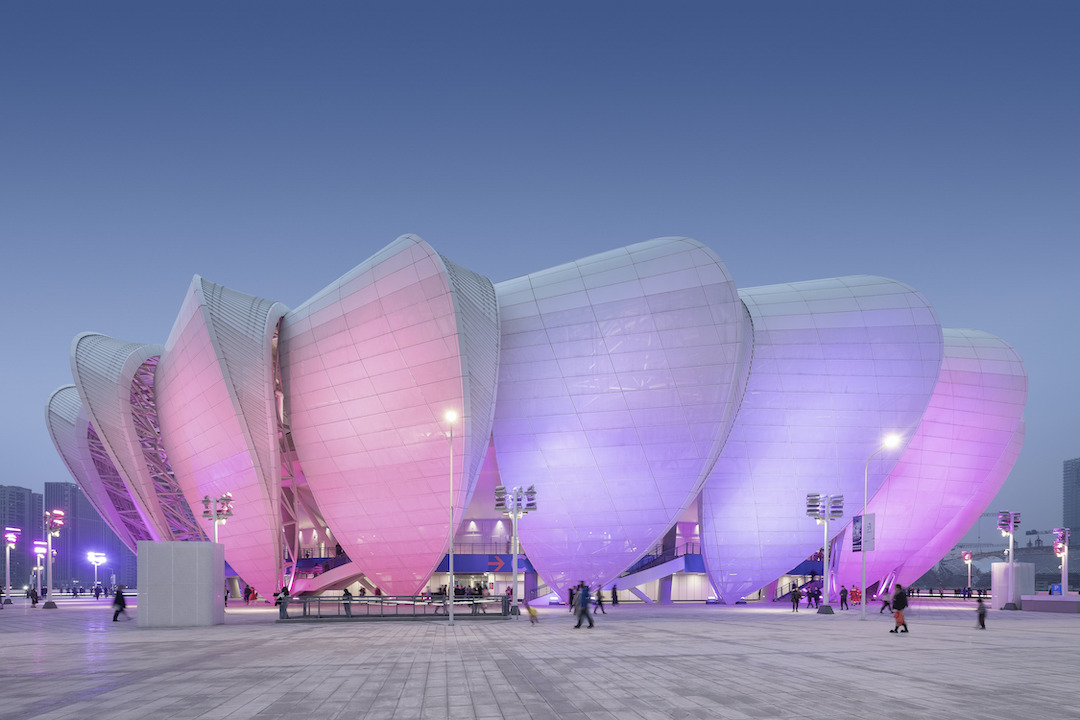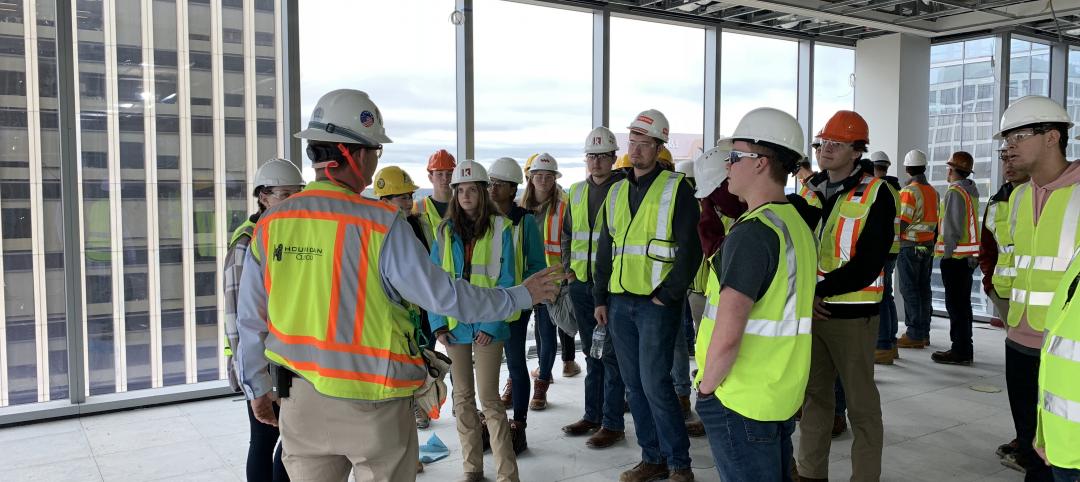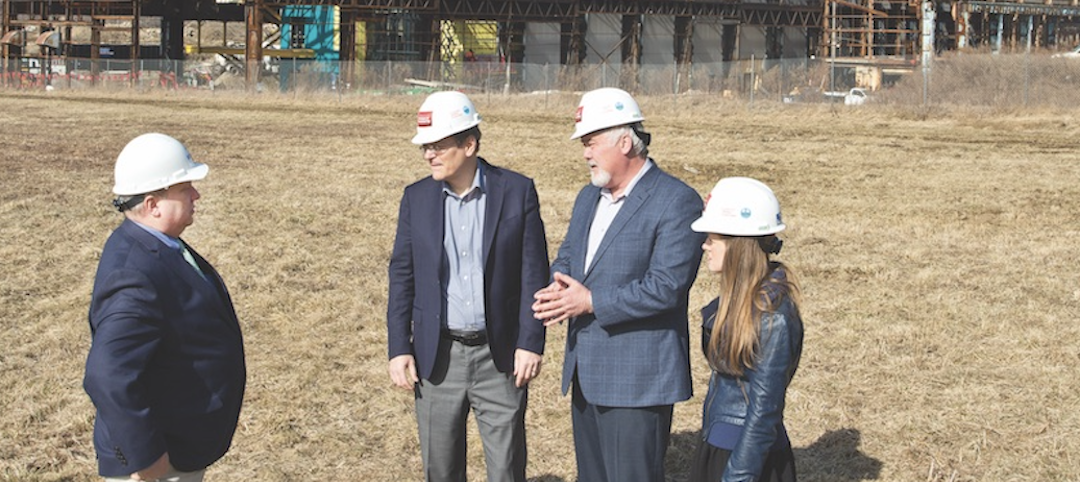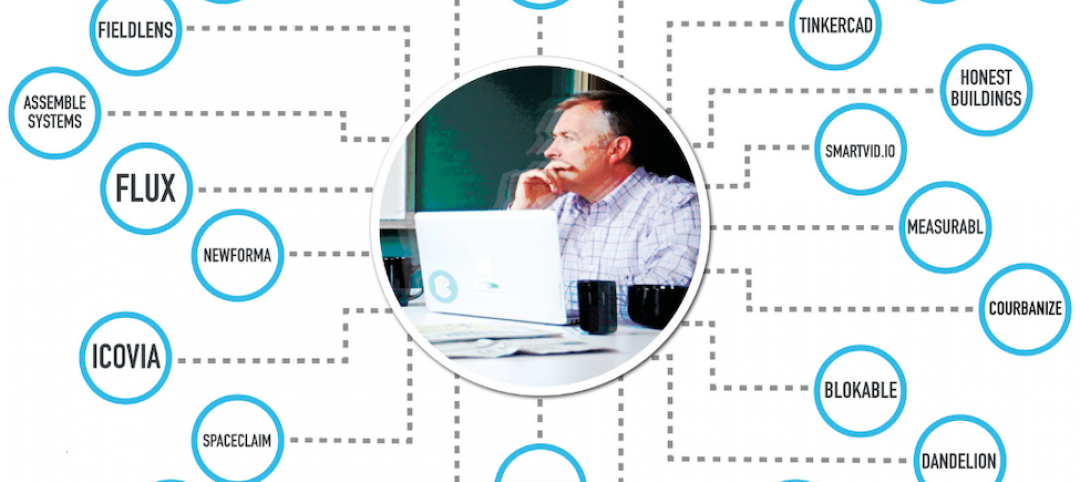In early February 2020, the city of Bellevue, Wash., made accessible renderings of Bellevue 600, a 43-story office tower that Amazon is building on a site that the ecommerce giant purchased in April 2019. Construction of this 600-foot-tall, 885,000-sf tower is scheduled to begin next year, and should be accepting occupants by 2024.
Embedded early in that project was NBBJ’s Design Performance Group (DPG), which the Seattle-based architectural firm created a year ago. The goal of this group is to transform buildings into “open source platforms” for the purpose of connecting design with improvements in occupants’ cognitive powers, productivity, and health.
The consulting team is now up to 25 people, and includes experts in building physics, architectural design, and engineering. “Since our launch, the DPG has had instantaneously traction with our clients,” says Steve McConnell, LEED AP, NCARB, RA, Managing Partner at NBBJ.
The group is also branching out with a series of digital tools, developed by its computational expert Nate Holland, which include the rollout of a daylighting analytical tool that can be used by non-experts. McConnell says other tools will soon be available to analyze acoustics and people movement and interaction; many of the tools will be predictive. “We’re bringing computational tools to the masses,” he says.
Lots of AEC firms talk about the importance of getting teams involved as early as possible on projects. To explain what makes the DPG different, McConnell conjures up a hypothetical academic medical center project, where NBBJ would now embed its experts with a conceptual design team to create a “frictionless” discussion with clients. “Before, all of these decisions would have been made by architects first,” says McConnell.
 The 80,000-seat Hangzhou Sports Park Stadium in China. Photo: Shao Feng.
The 80,000-seat Hangzhou Sports Park Stadium in China. Photo: Shao Feng.
Peter Alspach, NBBJ’s Director of Design Performance, says that he joined NBBJ, from Arup, because, “I wanted to get in at the onset to make early decisions.”
Because the DPG is still relatively small, it selected a “Green 15” number of buildings to work on initially. The projects were chosen because of their size and the environmental impact they could make. These include large healthcare projects, biotech and biomedical buildings, and corporate office towers.
One such project, whose construction is nearing completion, is the 80,000-seat-capacity Hangzhou Stadium in China, located on a 400,000-sm site on the Qian Tang riverfront, opposite the city’s new Central Business District. In partnership with CCDI, NBBJ designed this sports park (which includes a 10,000-seat tennis center) with computational analysis. Its Design Performance Group leveraged advanced parametric scripts and modeling techniques to develop and optimize the stadium’s exterior shell.
 Early analysis by DPG helped reduce the amount of steel needed for the shell of Hangzhou Sports Park Stadium to one-third of what a structure this size would normally require. Algorithmic scripts were also applied to every seat in the stadium to maximize fan views and comfort. Photo: Shao Feng.
Early analysis by DPG helped reduce the amount of steel needed for the shell of Hangzhou Sports Park Stadium to one-third of what a structure this size would normally require. Algorithmic scripts were also applied to every seat in the stadium to maximize fan views and comfort. Photo: Shao Feng.
Design changes for this project could be made within an extremely short turnaround period. The close communication among building team members enabled the design team to ensure quality control and find further optimization opportunities. Early analysis helped reduce the amount of steel needed to one-third of what a stadium this size would normally require. Algorithmic scripts were also applied to every seat in the stadium to maximize fan views and comfort.
Amazon already had set pretty aggressive performance goals for Bellevue 600, says Alspach. Where his DPG entered the picture early was in the building’s façade design to set performance targets and to help the design and building teams recognize solutions for such things as daylighting and passive ventilation.
The group was also involved in improving performance that is related to energy efficiency, carbon management, and human productivity (much of these analyses were accomplished through modeling). Alspach says the “human experience” drove the façade design that is consistent from the top of the building to its base, “despite varying solar exposures,” he explains. Design decisions were “automated” into a set of rules that didn’t impact the project’s cost or scheduling. “Standardization is a big plus for construction,” he says.
This tower and a second 33-story office building to be constructed on the same site will add 15,000 jobs to this metro.
McConnell says that NBBJ’s strategy is to scale the DPG as its work increases. The group will also set standards for the entire firm, including the development of an Applied Science tool kit.
 On the 600 Bellevue tower for Amazon, DPG set performance targets for the building’s façade design to help the design and construction teams recognize solutions for such things as daylighting and passive ventilation. Courtesy NBBJ.
On the 600 Bellevue tower for Amazon, DPG set performance targets for the building’s façade design to help the design and construction teams recognize solutions for such things as daylighting and passive ventilation. Courtesy NBBJ.
The creation of NBBJ’s Design Performance Group builds upon other initiatives that connect design to organizational and environmental impact. These include the firm’s 2030 Commitment to designing carbon-neutral buildings, the formation of a health research partnership with the University of Washington’s College of Built Environments (CBE), NBBJ’s Applied Research Fellowship program—now in its fifth year—and the incubation of virtual reality productivity company Visual Vocal.
On January 16, NBBJ announced that it would donate $250,000 to the CBE. “Connecting the knowledge loop between practices and academy is key toward ensuring our buildings foster and nurture human health,” says Renée Chang, FAIA, Dean of the CBE. McConnell adds that this multiyear partnership would anchor research more deeply to project work, and be shared more broadly across competitive boundaries.
“We’re striving to be leaders,” says McConnell. “We think we’re changing the game to pursue the front end of achieving beauty and performance.
Related Stories
Women in Design+Construction | Jan 25, 2024
40 Under 40 Class of 2023 winner Kimberly Dowdell inaugurated as AIA 2024 President
The American Institute of Architects (AIA) has announced the inauguration of Kimberly Dowdell, AIA, NOMAC, NCARB, LEED AP BD+C, Principal and Director of Strategic Relationships at HOK and BD+C 40 Under 40 superstar, as its 100th president.
AEC Innovators | Mar 3, 2023
Meet BD+C's 2023 AEC Innovators
More than ever, AEC firms and their suppliers are wedding innovation with corporate responsibility. How they are addressing climate change usually gets the headlines. But as the following articles in our AEC Innovators package chronicle, companies are attempting to make an impact as well on the integrity of their supply chains, the reduction of construction waste, and answering calls for more affordable housing and homeless shelters. As often as not, these companies are partnering with municipalities and nonprofit interest groups to help guide their production.
AEC Innovators | Feb 28, 2023
Meet the 'urban miner' who is rethinking how we deconstruct and reuse buildings
New Horizon Urban Mining, a demolition firm in the Netherlands, has hitched its business model to construction materials recycling. It's plan: deconstruct buildings and infrastructure and sell the building products for reuse in new construction. New Horizon and its Founder Michel Baars have been named 2023 AEC Innovators by Building Design+Construction editors.
40 Under 40 | Oct 19, 2022
Meet the 40 Under 40 class of 2022
Each year, the editors of Building Design+Construction honor 40 architects engineers, contractors, and real estate developers as BD+C 40 Under 40 awards winners. These AEC professionals are recognized for their career achievements, passion for the AEC profession, involvement with AEC industry organizations, and service to their communities.
Movers+Shapers | Nov 7, 2021
Passage of $1.2 trillion infrastructure bill expected to spur stronger construction activity
AEC firms see federal investment as historic
Movers+Shapers | Apr 30, 2020
College programs help prepare students for careers in the construction industry
Universities with AEC programs hone their curricula and research to prepare students to hit the ground running in the construction industry.
Movers+Shapers | Apr 21, 2020
Management Training: AEC firms bring students into the real world
Students benefit substantively from internships offered by AEC firms.
Movers+Shapers | Apr 17, 2020
Meet the ‘AEC outsiders’ who are helping to push the industry into the new decade
AEC professionals have enough on their plates without becoming specialists in a new skill outside of their wheelhouse.
Movers+Shapers | Apr 23, 2019
Steely resolve: Carnegie Mellon University fuels Pittsburgh's post-industrial reinvention
After the steel industry started collapsing in the late 1970s, Pittsburgh has been reinventing itself as a science, medical, and academic hub.
Movers+Shapers | Apr 19, 2019
AEC angel investor
Jesse Devitte is among the prescient venture capitalists who’ve bet on the AEC industry finally coming around to design and construction technology.
















